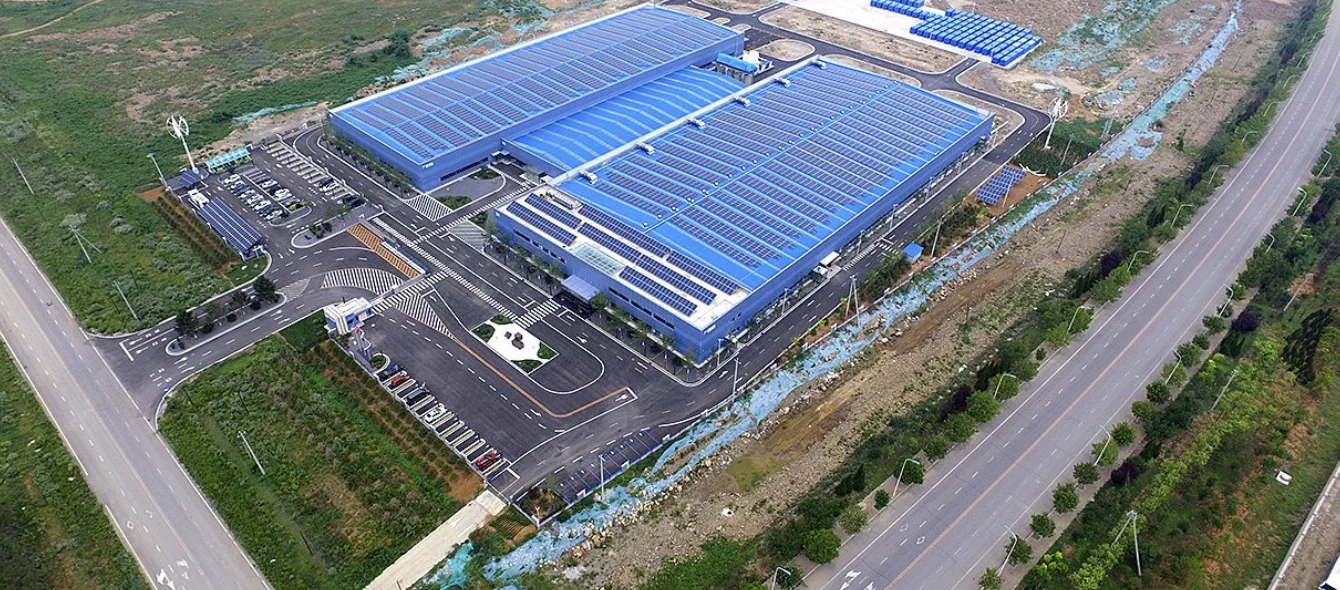China plans to connect its biggest battery farm to the grid before year-end. It has been designed to consist of ten units rated at 20 megawatts (MW) each, for a total storage capacity of 800 megawatt hours (MWh). It will thus be able to deliver its peak output of 200 MW for a full four hours. The first half of the capacity is slated to be available in 2021, with the second half coming online next year.
By comparison, Europe’s largest battery storage power station is located in Schleswig-Holstein and can store about 50 MWh of electric power and release it with an output of 48 MW. Back in 2017 in Australia, Tesla built the world’s largest battery farm at the time, boasting ratings of 100 MW and 125 MWh. It has since been expanded to 150 MW/194 MWh. A storage system of a similar order is set to be enlarged to 316 MW and over 2,500 MWh.
No lithium, no wear
A big difference compared to the other record holders is that the system in Dalian in the North East of China will use redox flow batteries with vanadium electrolyte instead of the lithium-ion variant. “Redox flow batteries have two major advantages over their lithium-ion counterparts,” says Roelof Platenkamp, co-founder of Dutch-based Vanadis Power, a partner company to Bolong New Materials and Rongke Power, which are constructing the mega-storage facility in Dalian: “First of all, they do not lose any capacity even after thousands of charge and discharge cycles and secondly, they are non-flammable.” Platenkamp adds that the Dalian battery farm is so safe that office space surrounding it is being expanded.
These rooms can be heated using the warmth generated above all when the redox flow batteries are charged. And it gets even better: the battery farm’s cooling system will double as a heat pump for the district heating network. After all, refrigeration compressors and heat pumps are basically two sides of a coin, or rather, of one and the same device.
Increased energy efficiency from heat and cool pumps
Both sides of the device, known as a compressor in tech speak, will be used in the electricity storage system in Dalian. “The concept is really intriguing,” says Lukas Ibing, who works in strategic development at RWE: The temperature of approximately 40 degrees Centigrade reached by redox flow batteries while charging is probably too low to be of any use in the district heat network, but “the higher the flow temperature, the less energy is needed by the heat pumps to heat the air to the temperature at which it is fed into the district heat network.”
This should pay off especially in the winter when outside temperatures are extremely low and demand for heating is particularly high. “However, it remains to be seen whether it makes economic sense,” says Ibing.
RWE is also researching redox flow technology
Ibing knows only too well that the economic viability of operating electricity storage systems is not a given. As head of RWE’s Panta.rhei project, he is tasked with exploring this very matter. The pilot is under construction and will consist of three banks of redox flow batteries good for a total of 130 kilowatts (kW) in output and 390 kilowatt hours (kWh) in capacity. “We need to understand how best to build and operate redox flow batteries and which opportunities and potential the technology has before investing in bigger storage systems,” explains Ibing.
He regularly discusses the results with the team of the cavern battery at RWE Gas Storage West GmbH (RGSW), which is also exploring redox flow technology, albeit in an entirely different dimension: “Our goal is to use salt caverns as electrolyte tanks for redox flow batteries,” states team director Kai Rittinghaus.
Gigawatt hour-class redox flow storage
RGSW operates several gas storage caverns in salt deposits located in Germany. Some of the subterranean cavities have a geometric volume of several hundred thousand cubic metres. Acting as electrolyte tanks, they would be large enough to accommodate redox flow batteries with a gigawatt capacity rating. Cavern battery systems can be scaled nearly infinitely. As all redox flow batteries, the determining factors are the size and number of the stacks. These are the components to which electricity is supplied and from which it is discharged.
Unlike Pantha.rei, which has produced ready-for-market redox flow batteries running on vanadium electrolyte, Kai Rittinghaus and his team are performing laboratory-scale tests on various electrolytes at CMBlu Energy AG. Rittinghaus says that thanks to the collaboration with the Bavarian startup, they “have found non-toxic, non-flammable organically based electrolytes demonstrating storage properties similar to those of vanadium electrolytes in the lab.” He adds that the next step will be to prove in a demonstrator that the technology works in practice. For this purpose, the CMBlu and RGSW consortium have submitted a project outline to the German government’s seventh energy research programme. “If our undertaking is included in the programme, we could start on the next stage of the project in 2022,” says Rittinghaus.
Overcoming shortages and cutting peaks
The primary objective of large-scale storage systems is to offset fluctuations of electricity from renewables. The batteries are charged during peaks, and whenever the wind and sun do not produce enough electricity, the batteries feed the electricity back into the grid. Besides bridging shortages, this also increases wind and solar farm capacity utilisation. As long as conventional power stations remain connected to the grid, their output can be kept more constant, the better grid voltage is regulated. And the less frequently the output of coal and gas power plants must be changed, the more efficiently they generate electricity. In other words, they need less fuel to produce the same amount of energy.
